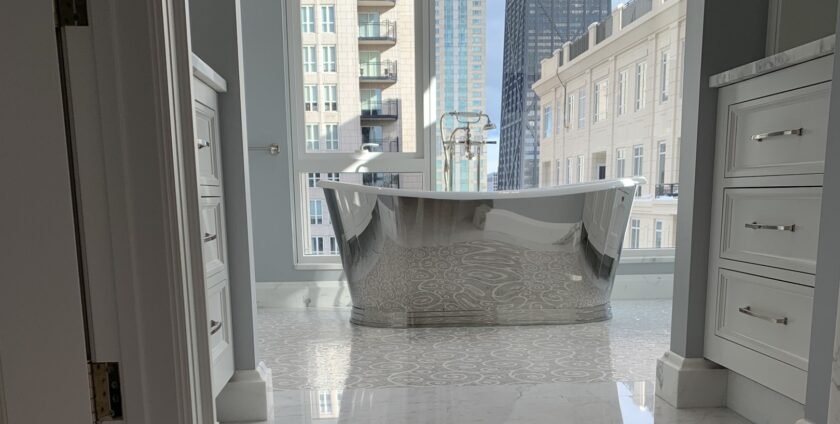
Maintaining the pristine beauty of stone surfaces in your bathroom requires consistent care and attention. From daily upkeep to periodic repairs, implementing best practices can ensure longevity and preserve the elegance of your stone fixtures. In this comprehensive guide, we’ll delve into the top strategies for stone surface repair and maintenance, emphasizing essential techniques and tips to keep your bathroom looking its best.
-
Regular Cleaning Routine: Establishing a regular cleaning regimen is crucial for preserving the integrity of stone surfaces in your bathroom. Use mild, pH-neutral cleaners specifically formulated for stone to avoid damaging its delicate structure. Gently wipe down surfaces with a soft cloth or sponge to remove dirt, grime, and soap scum, paying special attention to crevices and corners where buildup tends to accumulate.
-
Preventing Damage: Prevention is key when it comes to maintaining stone surfaces. Avoid using abrasive cleaners or harsh chemicals that can etch or discolor the stone. Additionally, place mats or rugs in high-traffic areas to minimize wear and tear, and promptly address any spills to prevent staining.
-
Sealing: Properly sealing your stone surfaces is essential for protecting them from moisture and stains. Depending on the type of stone, sealant should be applied every one to three years to maintain its effectiveness. Regularly inspect the sealant for signs of wear and reapply as needed to ensure maximum protection.
-
Repairing Cracks and Chips: Despite your best efforts, accidents happen, and stone surfaces may develop cracks or chips over time. Promptly addressing these issues is vital to prevent further damage. Use a high-quality stone repair kit to fill in cracks and chips, following the manufacturer’s instructions carefully for best results. For larger repairs, consult a professional stone restoration expert to ensure a seamless finish.
-
Polishing and Buffing: Periodically polishing and buffing stone surfaces can help restore their natural luster and shine. Use a specialized stone polish and a soft cloth to gently buff the surface in circular motions, taking care not to apply too much pressure. This process not only enhances the appearance of the stone but also helps to remove minor scratches and imperfections.
-
Maintaining Grout Lines: Grout lines play a crucial role in the overall appearance and integrity of stone surfaces. Keep grout lines clean and free of mold and mildew by regularly scrubbing them with a grout cleaner and a stiff brush. Seal grout lines as needed to prevent moisture penetration and discoloration.
-
Professional Maintenance: While many aspects of stone surface repair and maintenance can be tackled as DIY projects, some tasks are best left to the professionals. Consider hiring a professional stone restoration company to handle more complex repairs, such as deep scratches, severe etching, or extensive staining. Their expertise and specialized equipment can ensure optimal results without risking further damage to the stone.
-
Regular Inspections: Conducting regular inspections of your stone surfaces allows you to identify and address potential issues before they escalate. Look for signs of wear, damage, or deterioration, such as cracks, chips, or dull spots, and take appropriate action to rectify them promptly.
In conclusion, implementing best practices for stone surface repair and maintenance is essential for preserving the beauty and functionality of your bathroom. By establishing a regular cleaning routine, preventing damage, sealing surfaces, addressing repairs promptly, and seeking professional assistance when needed, you can ensure that your stone fixtures remain in pristine condition for years to come. With proper care and attention, your bathroom can continue to exude elegance and sophistication for generations to come.
If you think that your natural stone might need Polishing feel free to contact us.
We are ready to give you free quote.
You can also check reviews of our work on YELP or HomeAdvisor.
- By: Natural Stone Restoration" >Natural Stone Restoration
- Tags: Bathroom Maintanance, Bathroom Refinishing, Stone Repair
- Category: Articles
- 0 comment



